Cold Water Challenge
Quiet Time
The Decoy complex was buzzing with matches and pleasure anglers back in the summer, all enjoying hectic sport. It was far less frenetic when I returned in December, with many pegs to choose from and only one small sweepstake taking place in the distance. I enjoy exploring popular places like this after the crowds have gone, even when you need to add extra layers to keep warm in the chilly fenland winds. This is Beastie Lake, the original and oldest water, which I fished many years ago when commercials were relatively new on the scene. It’s very different now, with a network of tracks leading to many interestingly shaped newer pools, along with a café and tackle shop. Chilly nights, storms and local flooding had turned sport much tougher on the numerous drains and stillwaters around here, but this spot looked calm and inviting.
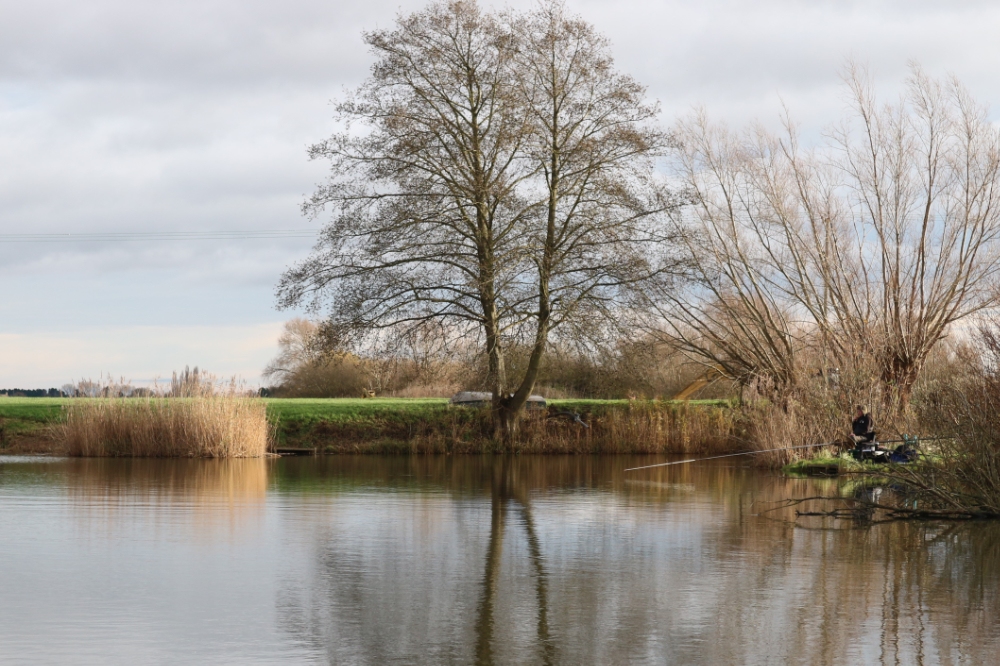
Peak Period
I fished Horseshoe Lake previously, which is just a stone’s throw away, and bagged up. It was less cold then. I started by cupping in pellets at mid-pole range, but had so many carp and silver fish competing, it was better to drop short and loose feed by hand. Back then, attacking with plenty of bait sped things up even more, resulting in a great mix of roach, skimmers, carp and F1s. Fishing close in on well-stocked venues makes sense when their inhabitants are active because it’s the fastest way to accumulate big hauls. But that’s rarely the case in winter, when you have to trick fish into having a go as they become lethargic and shoal up. As the water turns clearer because of overnight frosts, it becomes harder to draw anything to you. Instead, it’s often a case of having to search for bites, finding out where different species have moved to.
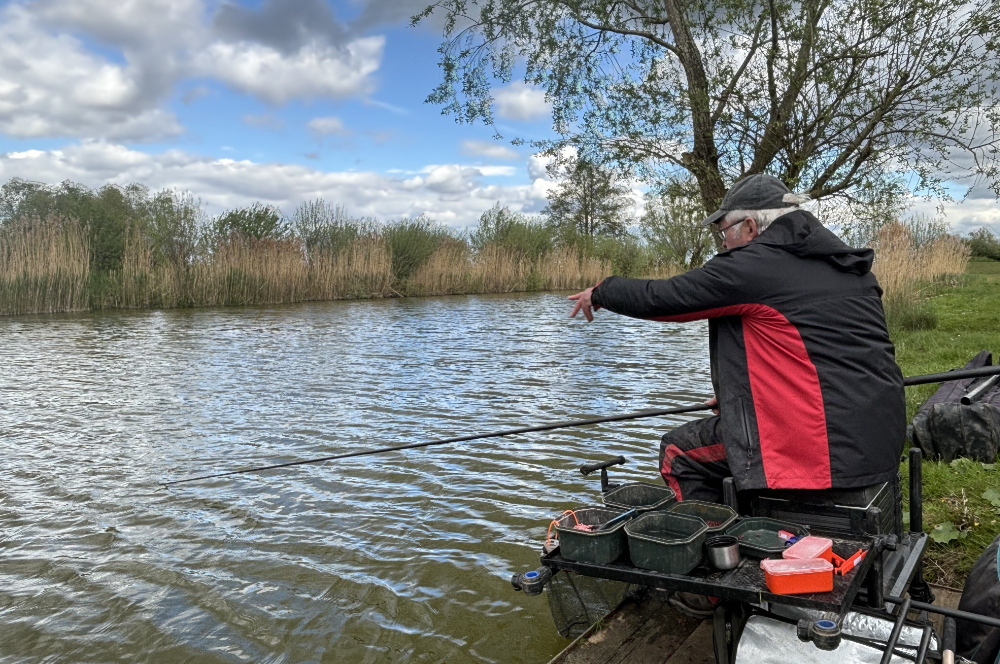
Diverse Tactics
When visiting venues you are less familiar with, it helps to have company, trying different things to find what works best. Big fish like carp love hugging tight to island features in winter and are less inclined to venture away from such spots. This requires putting your hook bait right on their doorstep, where eventually it’s likely to provoke something into having a go. When casting to where fish are, rather than trying to bring them to you, feeding is less important. I’ve seen big catches taken on places like this with no loose feed at all being used, simply launching out a big carp waggler or a straight bomb rig, combined with baits like mini boilies. Discs of bread can also score well with leger tackle. If you opt for the feeder route, smaller sizes of method or hybrid designs are best, introducing light loadings of micro pellets or sticky groundbait.
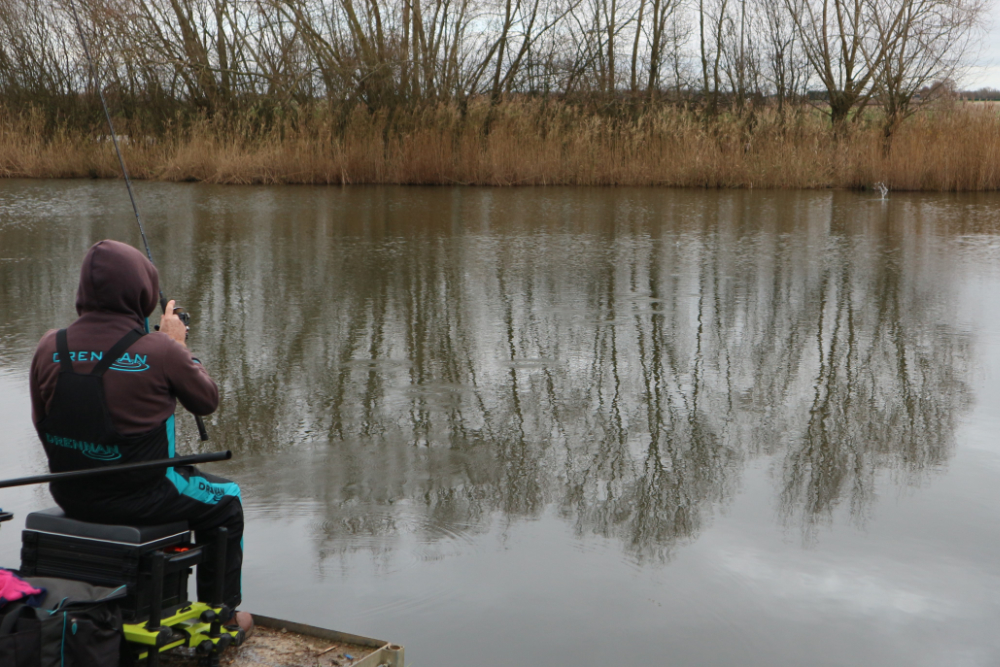
Then and Now
Previously, tackle needed to be fairly strong, using 0.15mm or 0.165mm Edge Premium hook lengths with my Cadence CP800 Margin Pole. Plenty of hefty carp came calling, but when it turns cold, end tackle needs to be more refined to conjure up interest. In early summer I used number 10-12 Edge Hybrid Hollow Latex, but when relying on the pole in December, I drop down to Hybrid Solid 4-6 Green Latex. This combines perfectly with 0.12mm Premium Mono at the business end of the rig. Similar modifications apply to running line tackle, reducing line diameters and hook sizes – even wire thickness – in the quest for bites. With waggler tackle, 0.12mm hook lengths are usually okay in winter. Short in-line feeder hook lengths can be scaled down too, using 0.16mm or 0.18mm Edge Fluorocarbon Pure, which is very effective in clear water.
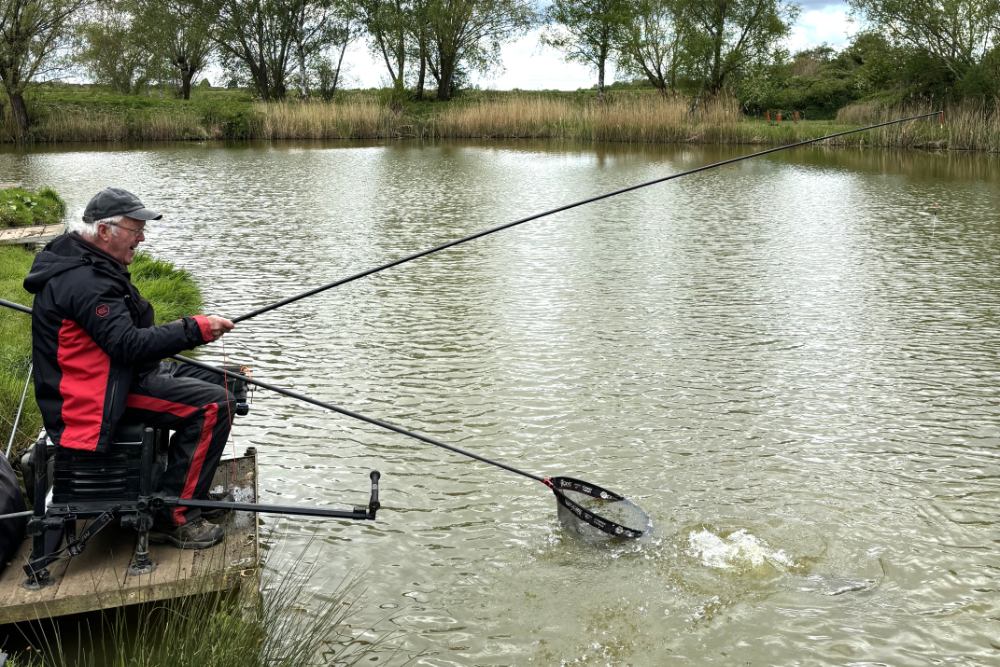
Careful Feeding
When attempting to tease fish into having a go, Sonubaits 2mm Pro Expander Pellets are my first-choice winter loose feed. After soaking in water, they swell up half as big again, sinking without needing a pump. Apart from cupping, they also group well and gain good distances when fired from a catapult. They are particularly effective at attracting skimmers, compared to normal 4mm feed pellets, which are less active. I combine them with either red maggots or 4mm expanders on the hook. It’s a top way of inducing plenty of bites with pole or waggler rigs. With the latter method, I use 4mm Pro Expanders on the hook because they are more robust and withstand vigorous casting. You can put out a good bed of swollen 2mm pellets without fear of overfeeding, topping up with extra small helpings, along with a few maggots or casters.
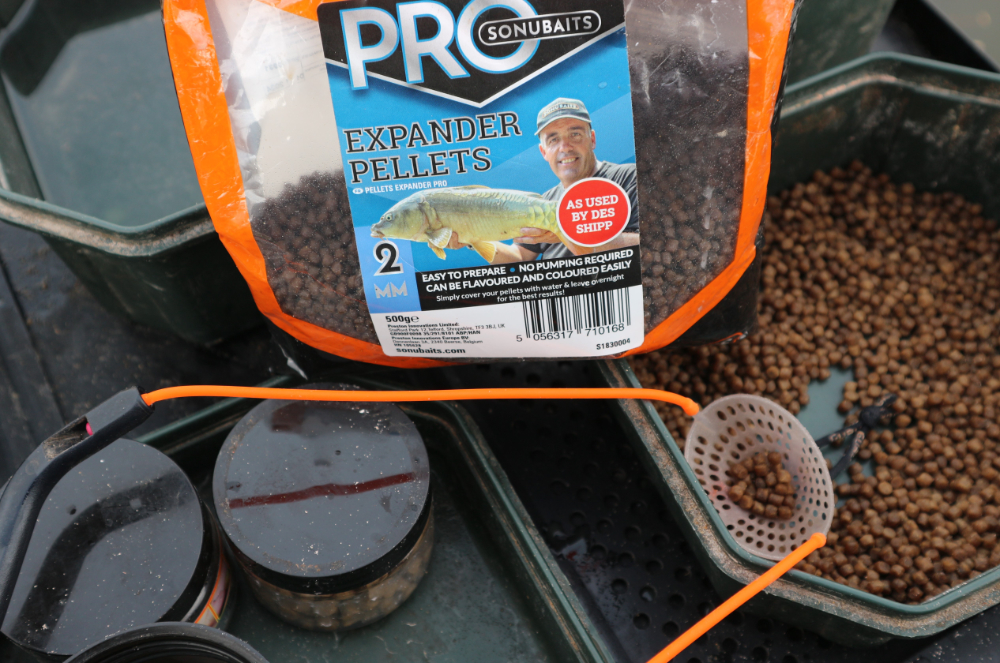
Bait Balance
Whereas back in the summer when I landed lumpy carp like this one on Horseshoe, I suspected the majority of fish this size in Beastie Lake had by now gone into hibernation. That meant cutting down dramatically on the amount being fed. When bagging up in warm weather, it’s easy to get through at least a couple of pints of pellets. In winter, I often use a lot less than a fish like this might consume in a matter of minutes when more active. Even when sport is good in the cold, I rarely get through half a pint of micros as loose feed, not much more with small in-line feeders either. If you put too much grub in when there is little interest, each extra helping reduces your chances of catching. Spreading bait about too much also lessens the odds of something finding what’s on your hook, especially when fish are less inclined to search around.
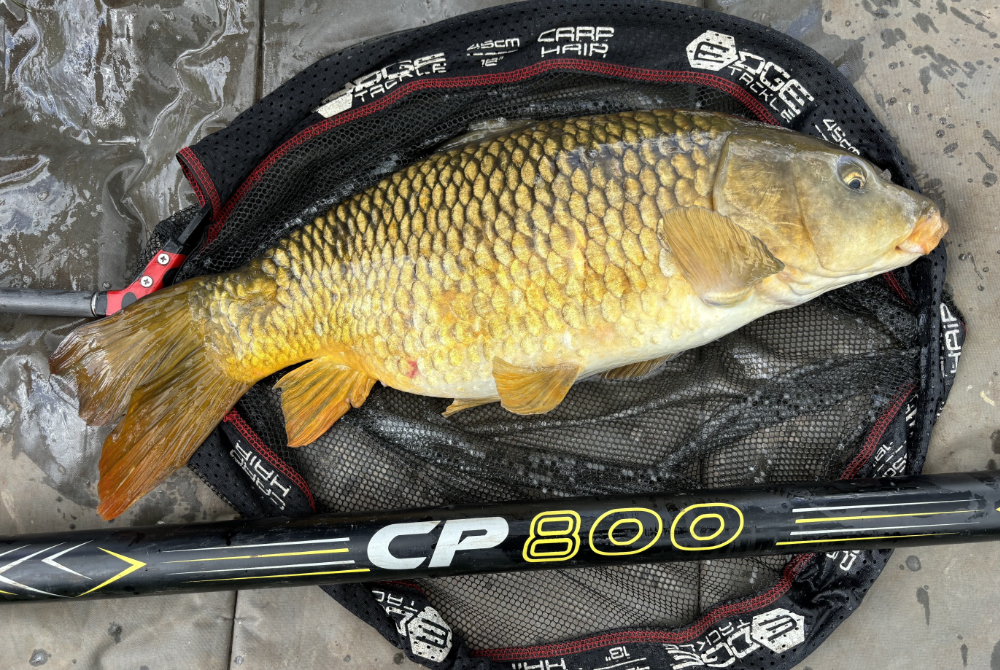
Long Option
The long pole fished out into deeper open water is another proven winter tactic, trickling in tiny amounts of pellets or maggots with a small kinder style pot. It’s laborious carefully filling a tiny cup on the end of your top kit, then slowly shipping everything out without spilling anything, but worth the effort if it magics bites out of nothing. Setting a trap this way, by accurately tipping loose feed over a pole float, keeps presentation tight, similar to how in-line feeders and short hook lengths work. It’s a tactic that teases lethargic carp and F1s into having a go, along with quality skimmers. Adding a few maggots or casters can also wake up bonus roach, rudd, and perch. This is a safer bet than catapulting, which tends to spread free bait more, making it harder work to gain positive bites. It pays to feed ultra-carefully, at least to begin with.
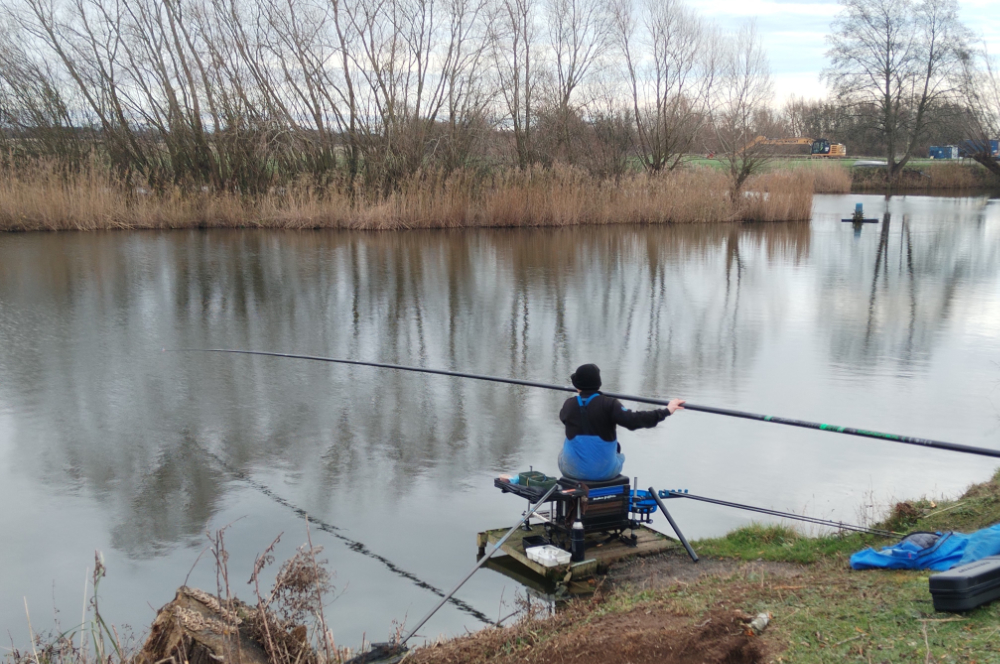
Lightly Does It
The minimal feeding approach is capable of working wonders on all types of venues, not just commercials like this. It takes plenty of patience and willpower to get right, but often makes all the difference between catching or dry netting when the going is tough. This turned out to be a big F1, a species well-known for requiring stealth when it’s cold and the water turns a lot clearer. Note the mini pole extension kept close to hand, another useful accessory that can unearth bonus bites when it’s rock hard. Occasionally adding some extra length to a long pole, pushing your hook bait beyond where feed is going in, often results in making something happen. Big fish have a habit of hanging back from feed areas, even tight ones, as they decide whether to have a munch or not. Dropping a hook bait right on their nose can make them instinctively grab it.
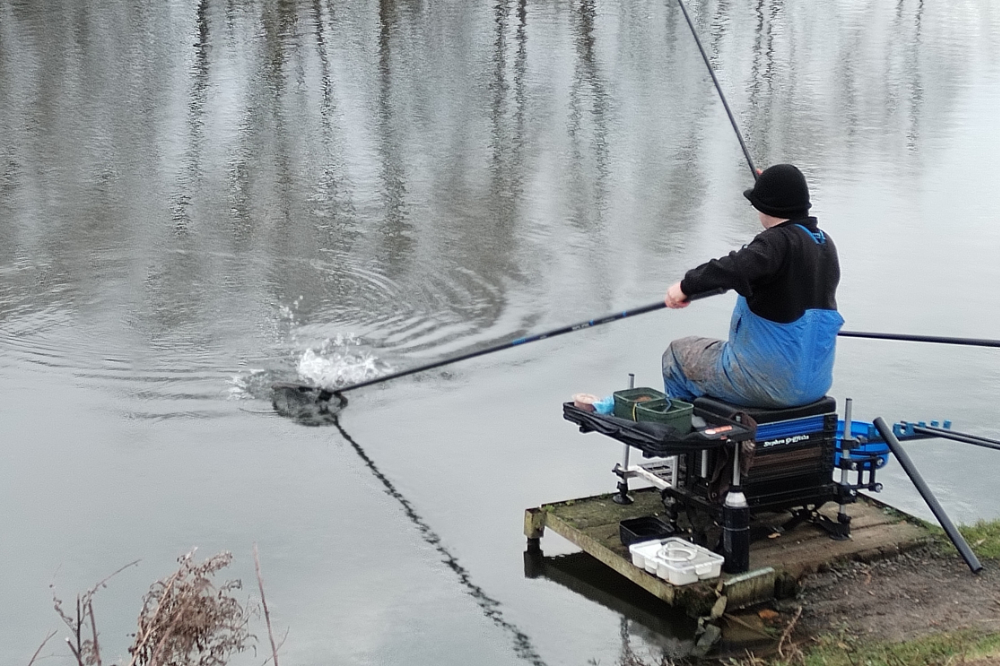
Searching Around
While others with me were working hard with the pinpoint accuracy of in-line feeder and long pole cupping tactics, I opted for my favourite waggler approach. To begin with, I tried casting around the swim without feeding anything, which can sometimes result in a lucky fish, but more importantly, lets you see if there is any tow. If there is, you can then allow for where the float rig is likely to end up before feeding anything with a catapult. In this case I found, by going several inches over-depth, the waggler settled dead still after the undertow had pulled it a few feet to my left. I then catapulted small helpings of 2mm Pro Expander Pellets over that area, along with a few casters. Although this spread loose feed slightly more, a running line float set-up lets you search more widely for any interest. It was a long time before I managed to get a response.
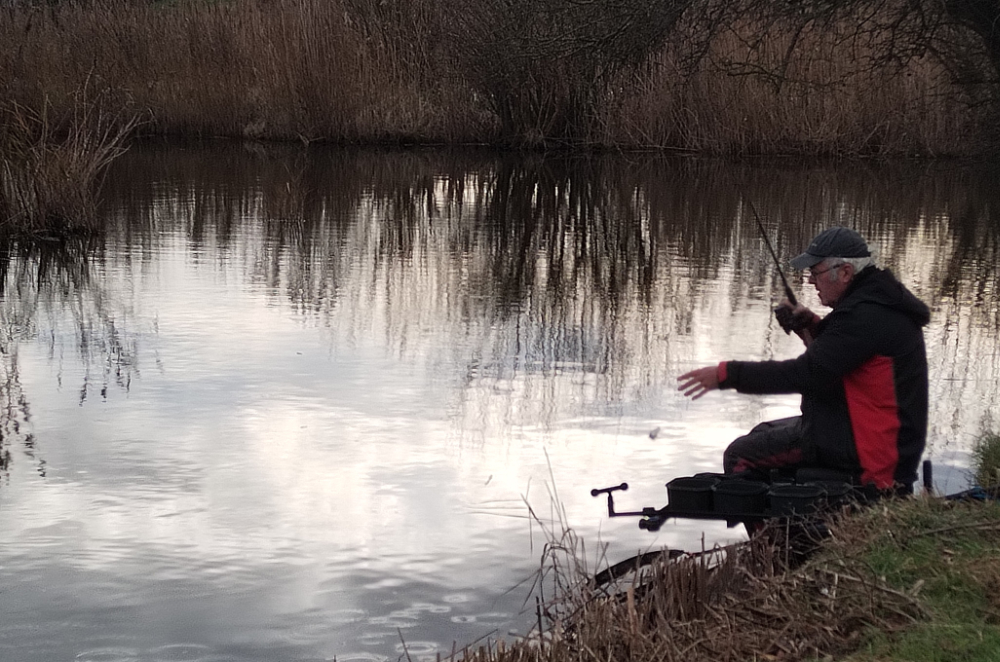
Taking Over
While studying a motionless float out in open water, I could see dreaded cormorants circling above, thankfully deterred from landing when they saw several anglers dotted along the bank. I also noticed some surface activity down the reedy margins to my left. Keeping an eye on that, I spotted a couple of silver fish topping, so I threw out a small helping of maggots and wound my waggler in over the spot. It sank away instantly and a small roach resulted. Next cast another. It soon became apparent any potential prey fish were crammed tight to margin cover and were reluctant to come out. I kept trying odd casts in open water, but couldn’t buy any interest, even by twitching the hook bait occasionally to inject a bit of life into it. That’s often a brilliant trick when it’s cold, encouraging anything big to stop it escaping, but not on this occasion.
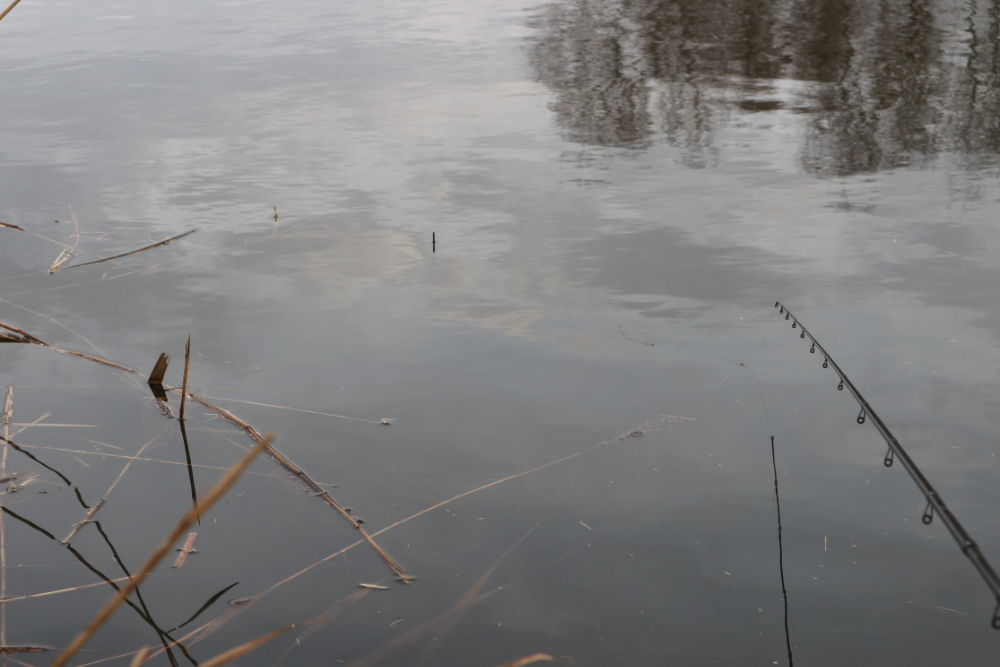
Scoring Points
Bored with trying to make something happen over my main line of attack, I continued to catch small roach like this one down the edge, not bothering by this stage to set up a short pole or whip. Of the different methods being used along the bank, a micro pellet loaded feeder scored best, accounting for 5 carp tight to the big island. The long pole managed just the one big F1 out in open water, after which came me with 30 silvers caught late, all roach apart from one perch. Some were slightly bigger, nearing the 4oz mark. I joked with the others that this had turned into a points match, putting me way ahead in the numbers game. That didn’t go down well with the mate who had taken a double-figure haul, who reminded me I was lagging several pounds behind. It was still interesting discovering what worked best under such difficult conditions.
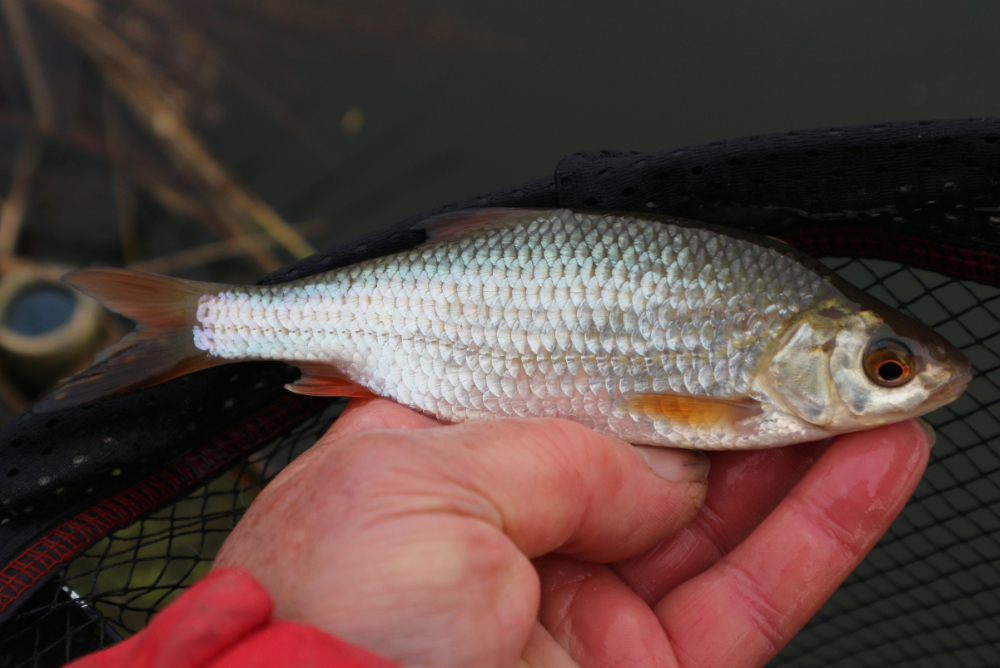
Summing Up
When it becomes an endurance test to be out on the bank, It needs to be particularly dire for me to want to give it a miss. I enjoy the cold-water challenge, which makes you work so much harder, having to keep your wits about you to succeed. I did go for a walk to warm up a bit and discovered yet another new pool in the making on the Decoy complex, where a big digger had started sculpting out banks and an island. While trying to imagine what the lake would look like, I remembered other wintry escapades where it would have been easy not to have bothered, but where I ended up pleased I had. Setting up my gear in a snowstorm for a sweepstake on a park lake came to mind, thinking what the hell was I doing. I’ve never been so cold, but amazingly the fish didn’t seem to mind, and I caught a big netful of quality roach and skimmers.
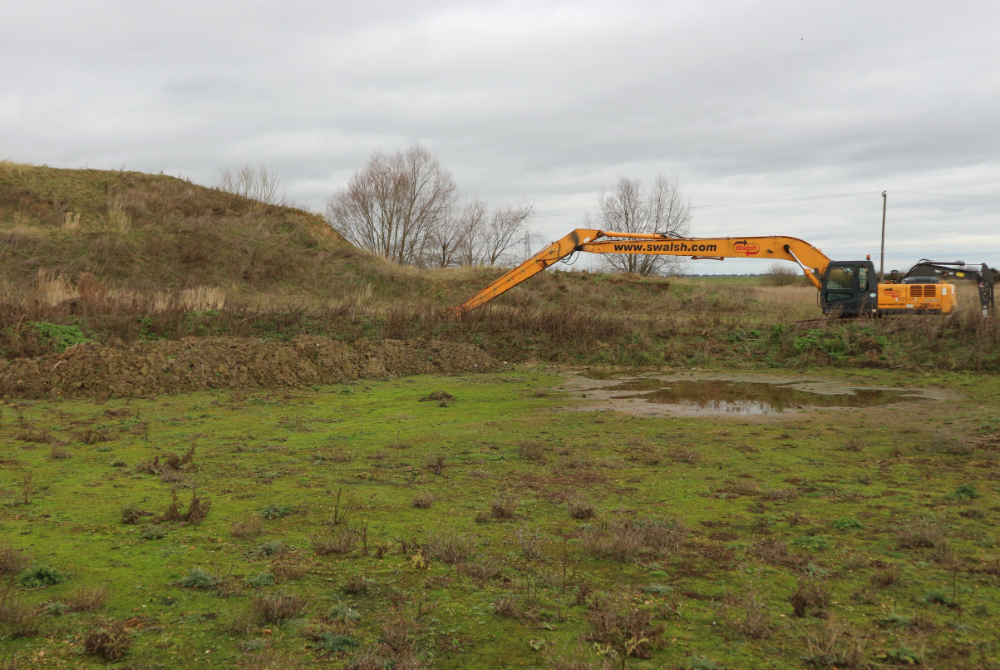

Some really good tips there Dave. Like you I do enjoy the challenge of a winter match. Makes you think a bit harder and is all the more satisfying when you get it right.